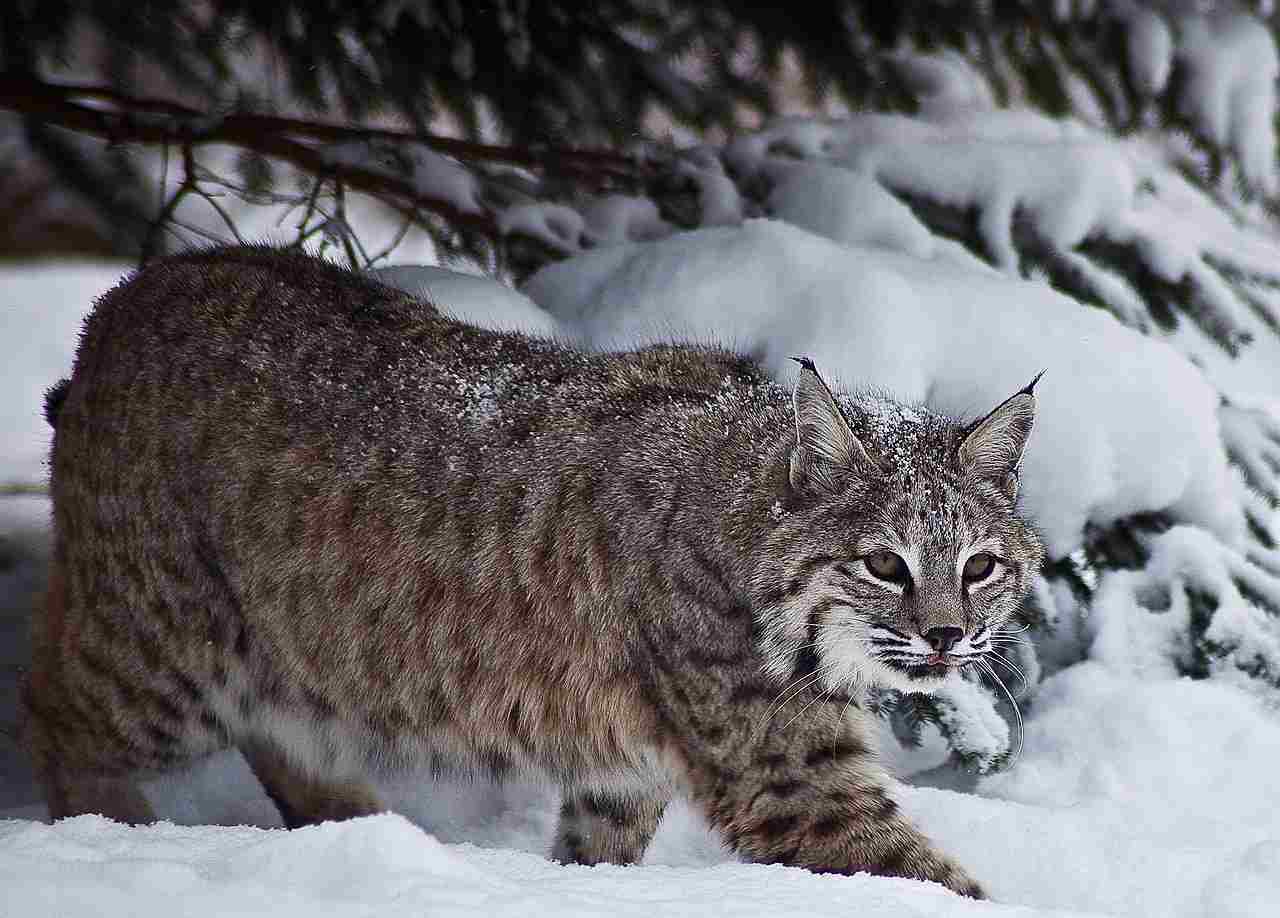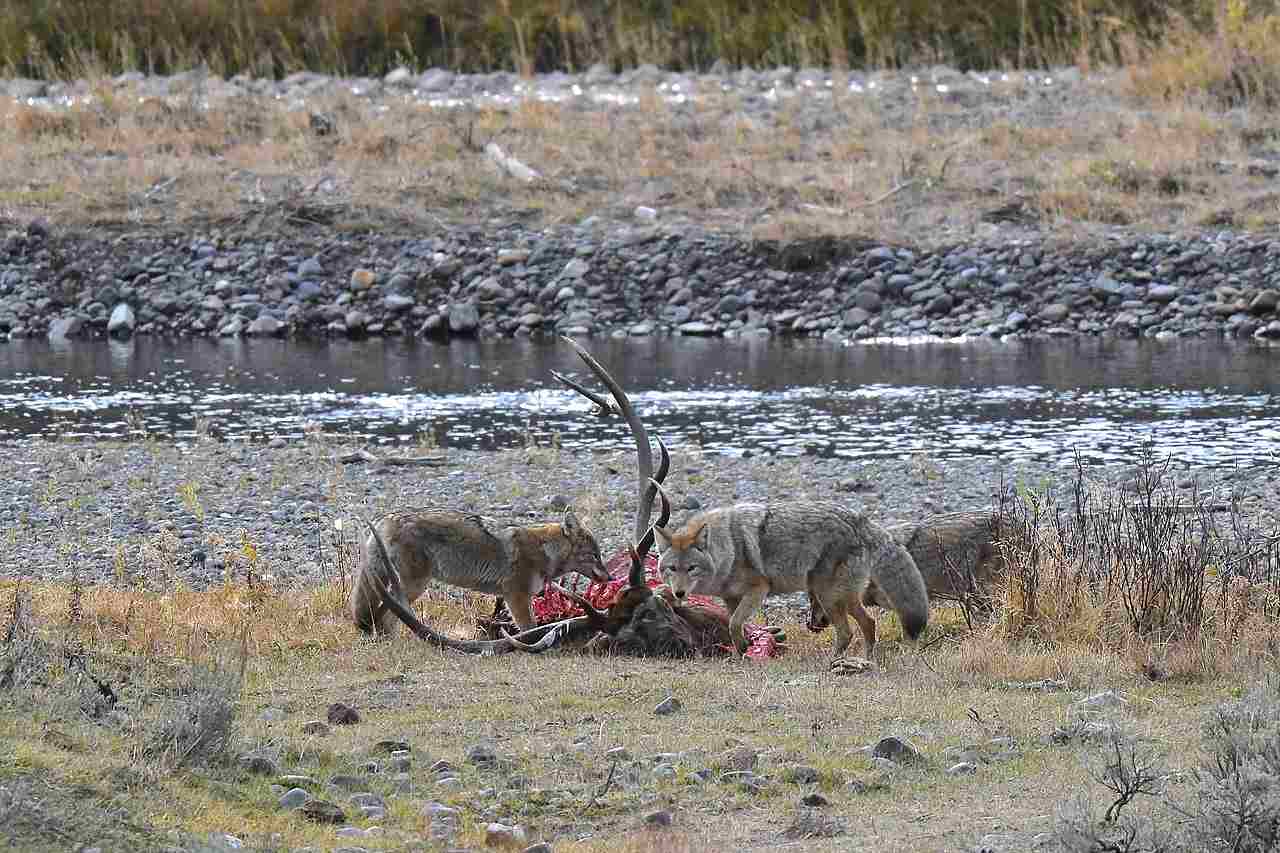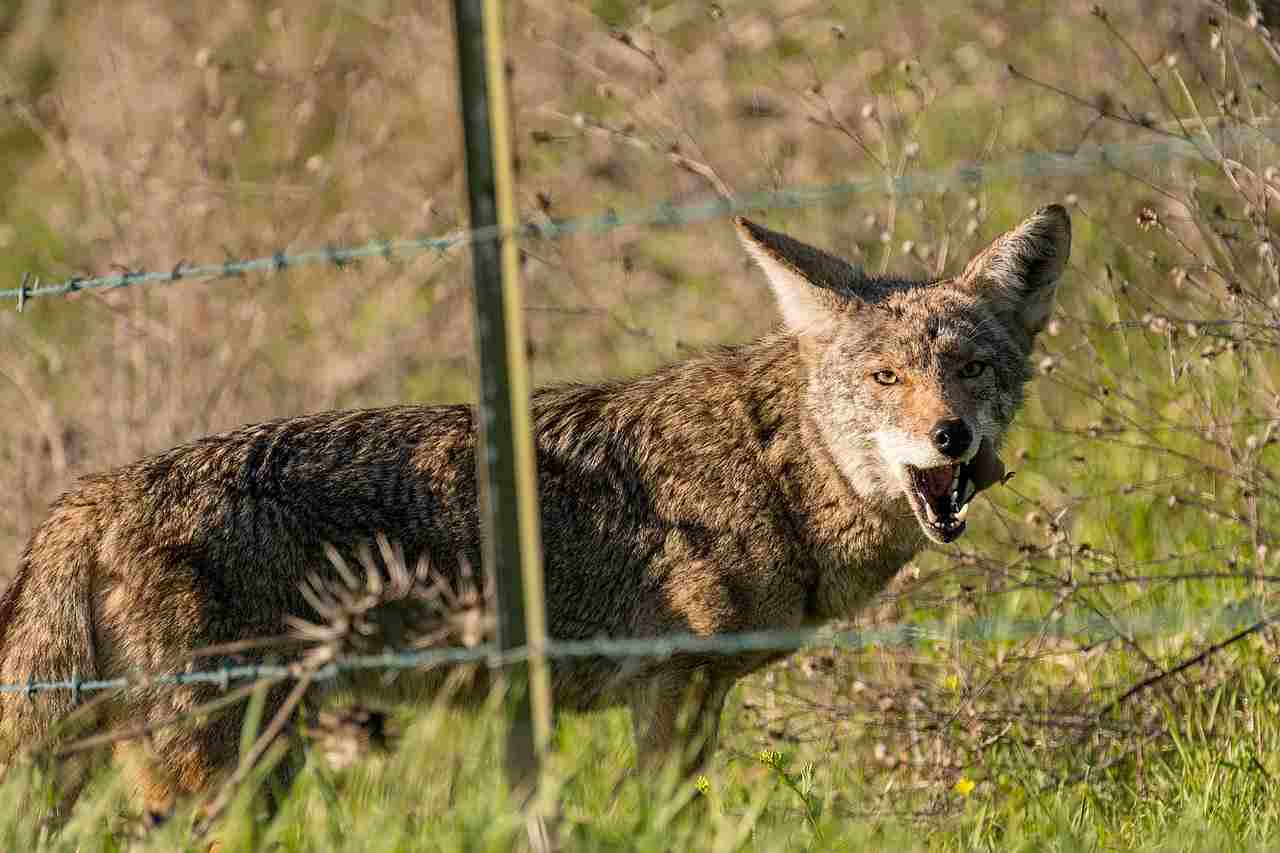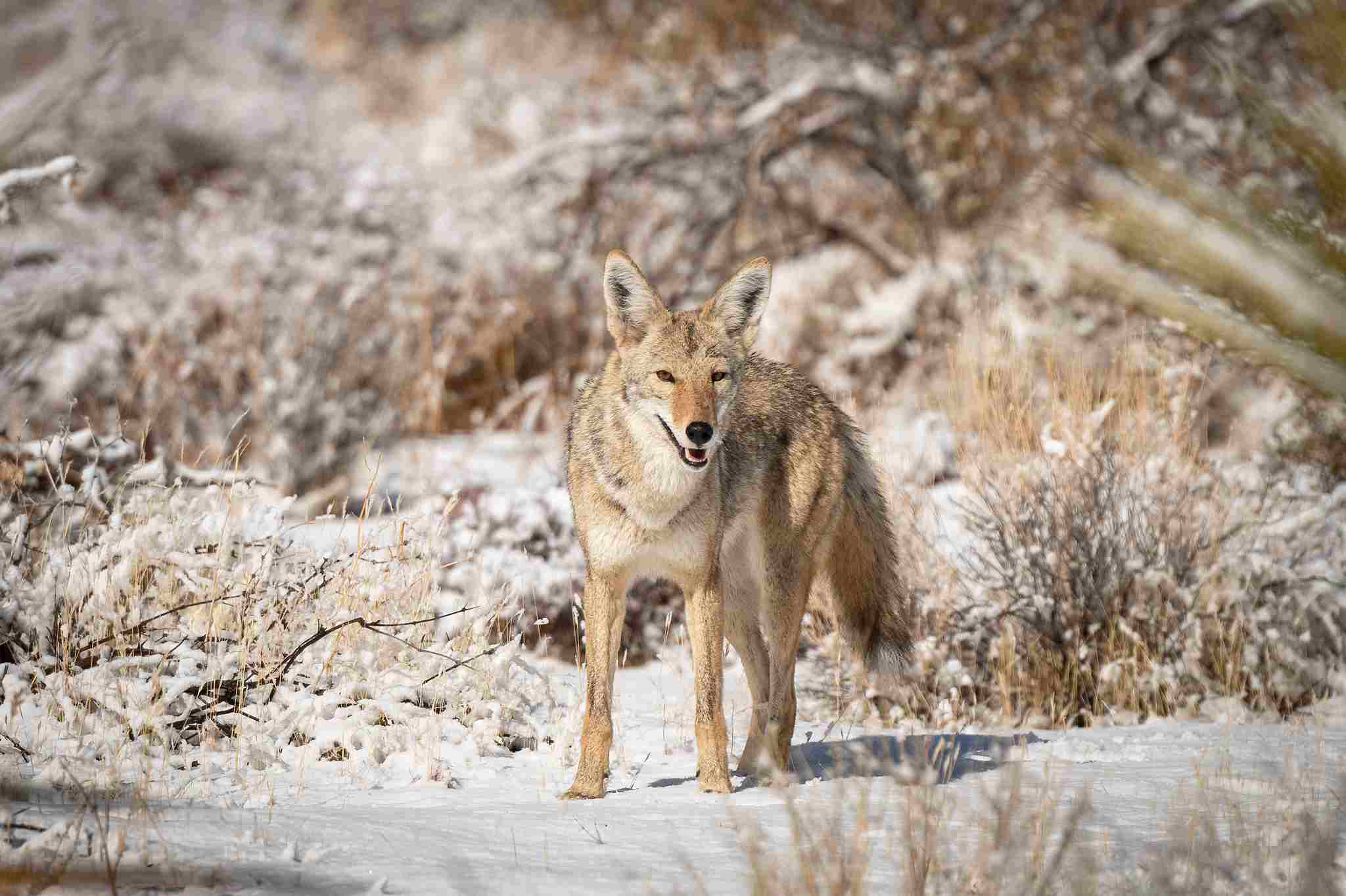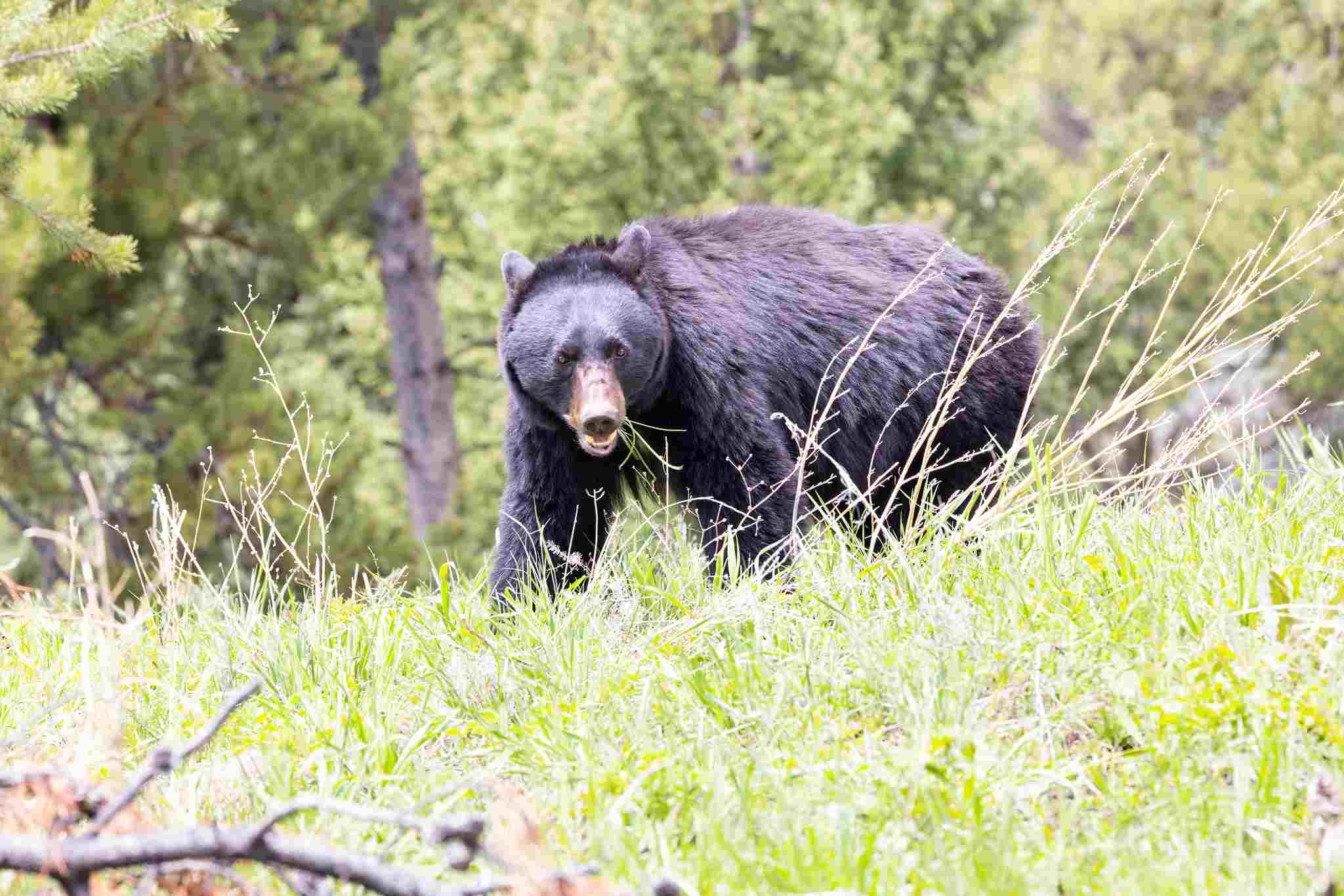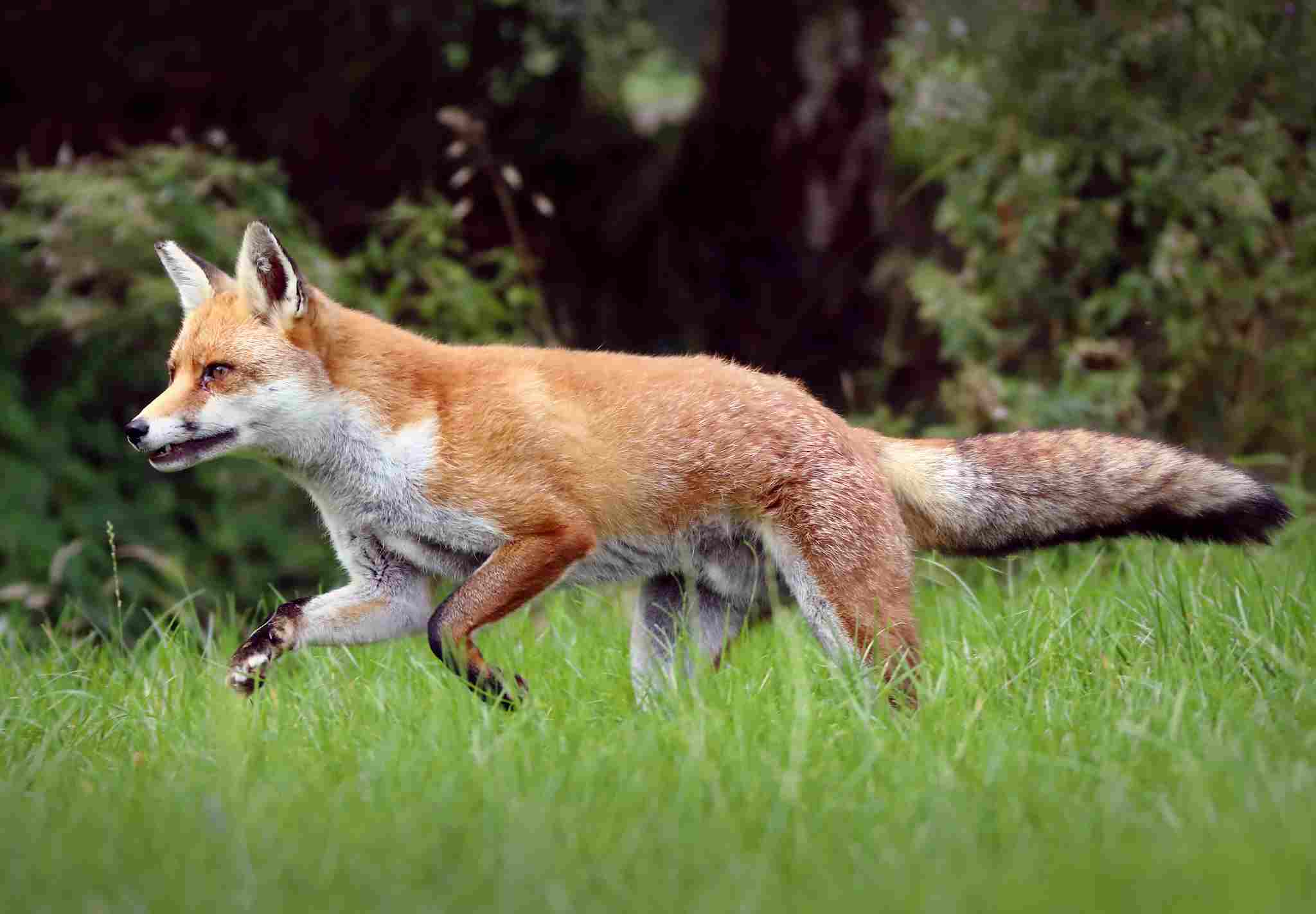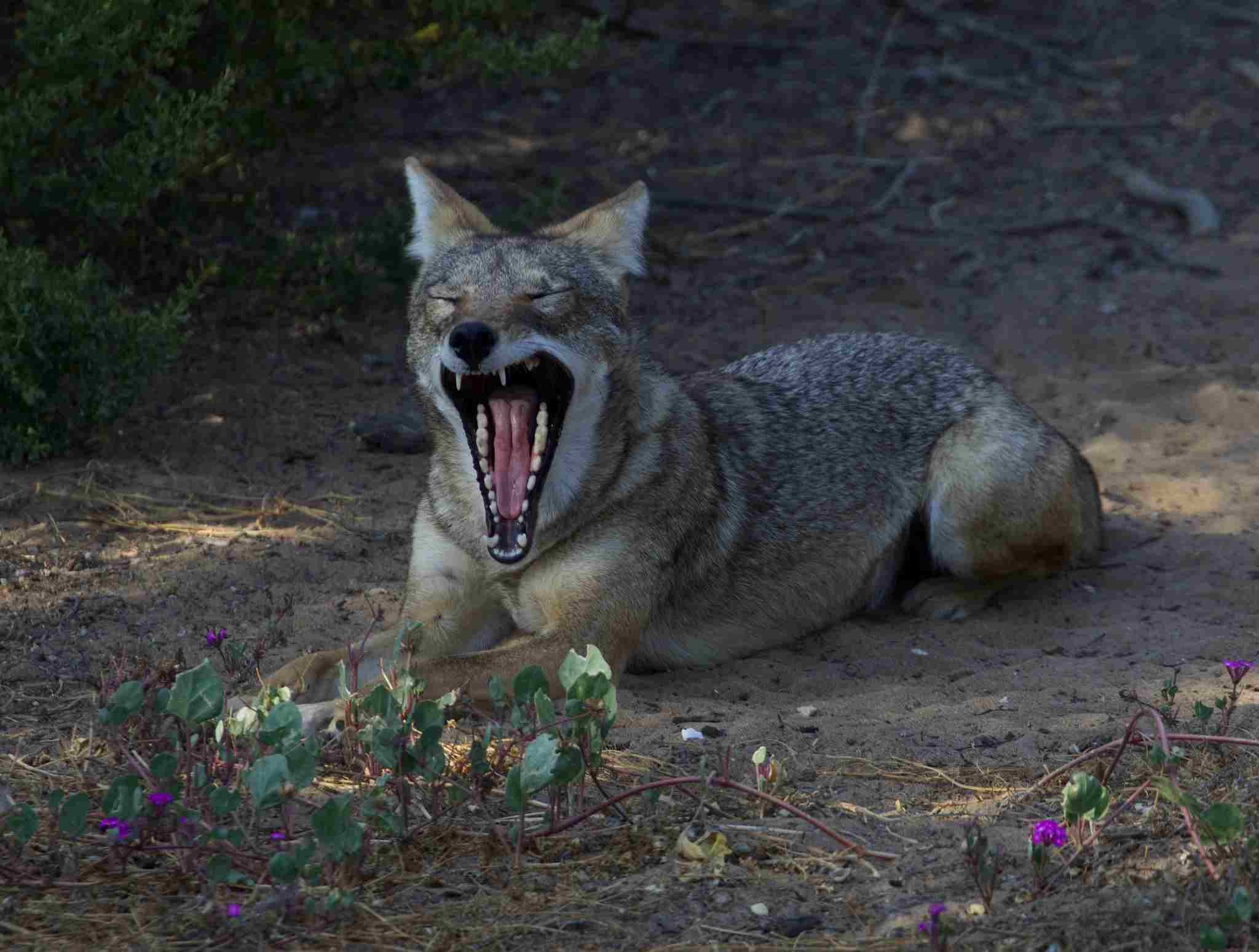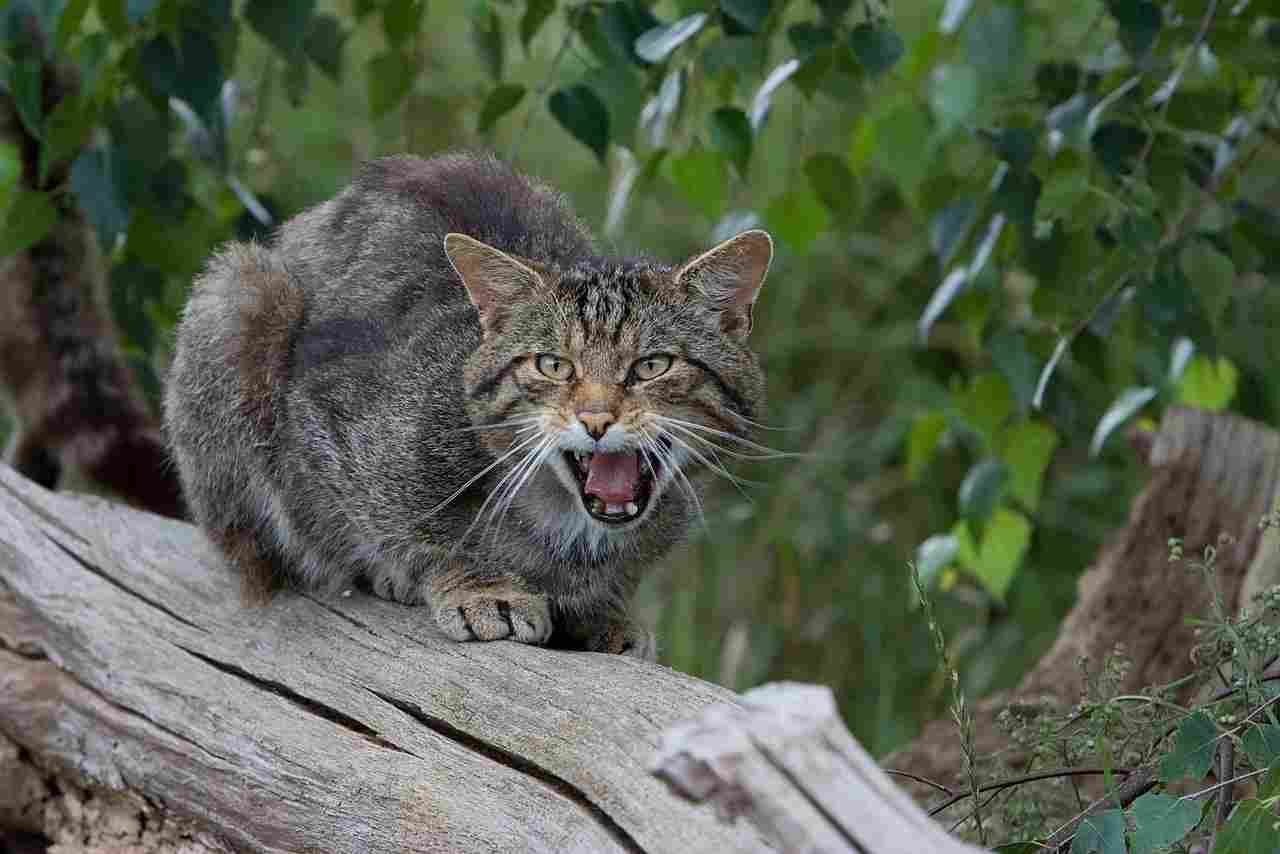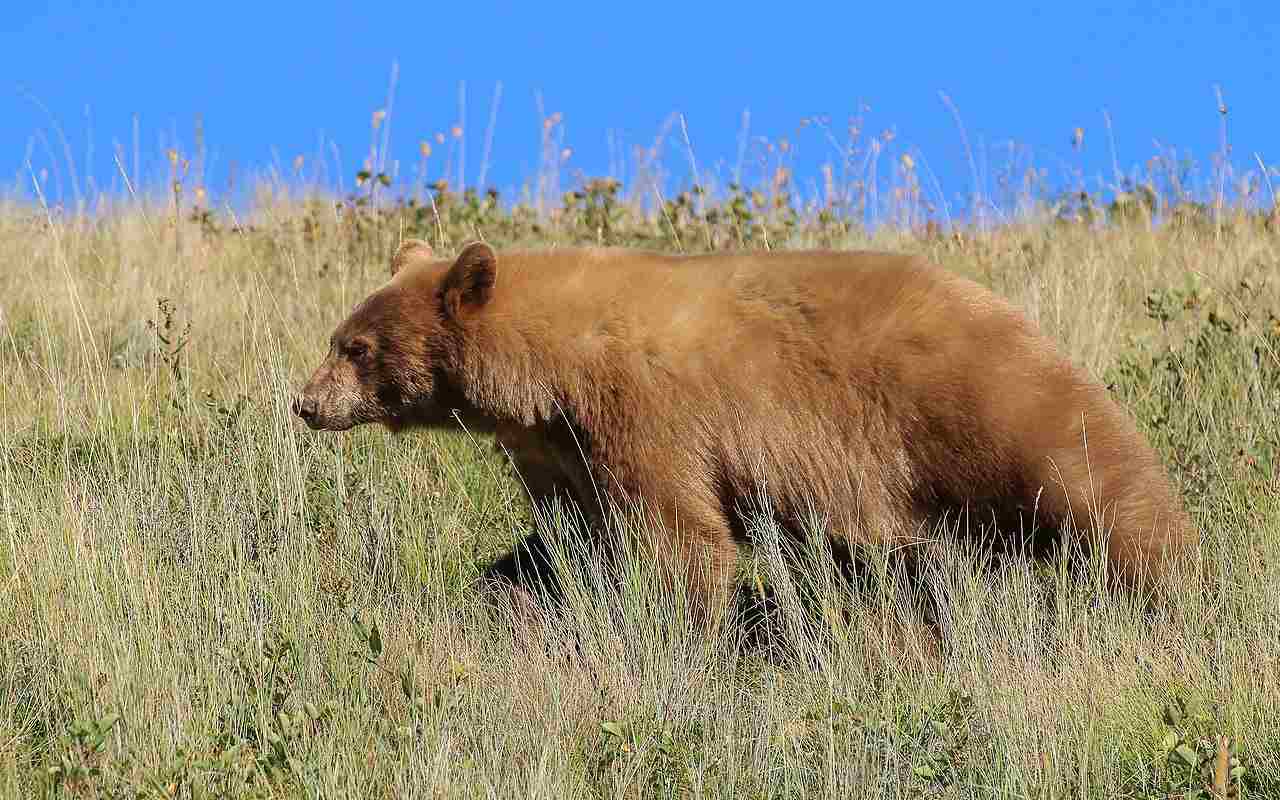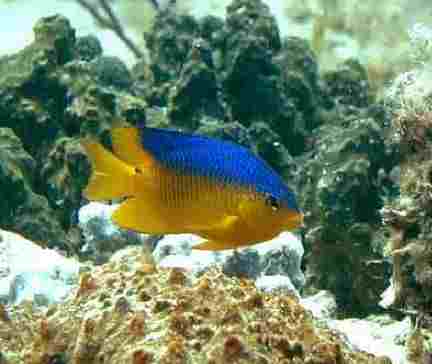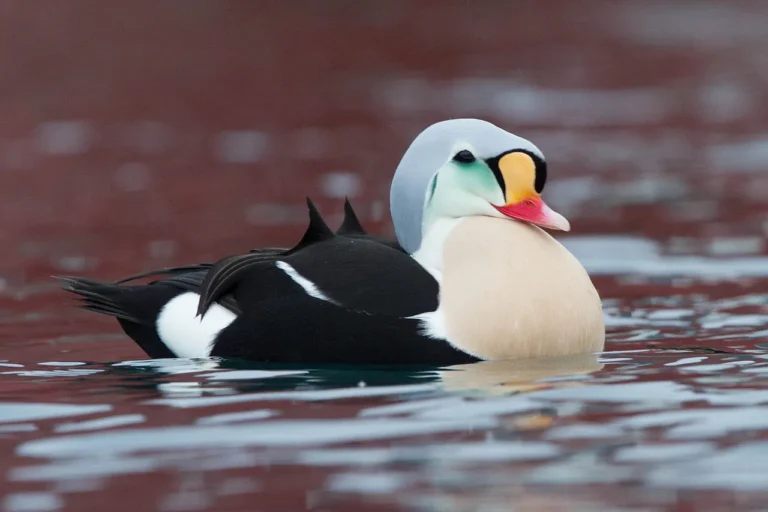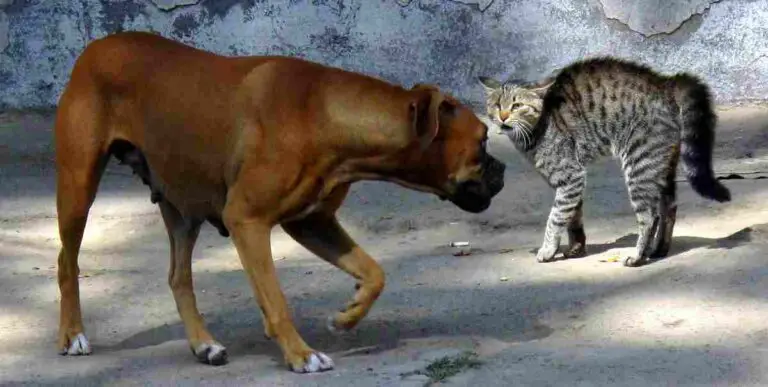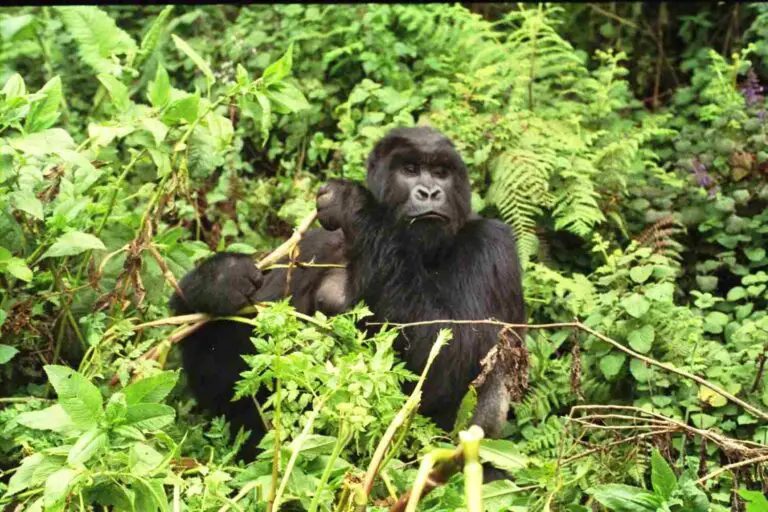11+ Predators In Iowa And Their Characteristics Discussed
Examples of predators in Iowa are foxes, which are primarily nocturnal and hunt small mammals and birds; coyotes, adaptable and opportunistic hunters; and bobcats, elusive wildcats that establish territories. The state’s predators also include larger animals like mountain lions and black bears, and smaller creatures like the American badger and shrews. Venomous species like the Eastern massasauga, timber rattlesnake, and brown recluse spider are also present. Other reptiles and amphibians include skinks, tree frogs, and salamanders, which play significant roles in controlling insect populations and maintaining ecological balance.
1. Fox
Foxes in Iowa are versatile and adaptable predators that play a crucial role in controlling rodent populations. The most common species found in the state is the Red Fox (Vulpes vulpes), recognizable by its bright orange-red fur and bushy tail tipped with white. These cunning hunters are highly adaptable, thriving in a variety of habitats from forests and grasslands to urban areas. Their diet is diverse, encompassing small mammals like mice and rabbits, as well as birds, insects, and occasionally fruits. Foxes are primarily nocturnal, using their keen senses of hearing and smell to locate prey in the darkness.
Socially, foxes are known to be solitary but are also capable of forming small family groups during the breeding season. Their dens are typically burrowed into the ground or found in hollowed trees, providing a safe place for rearing their young. Despite their stealthy nature, foxes often leave behind clear signs of their presence, such as footprints, scat, or even glimpses of their vibrant fur as they move through the landscape. In Iowa, foxes face challenges from habitat loss and hunting, but they remain resilient predators, continuing to play an important ecological role in their environments.
2. Coyote
Coyotes (Canis latrans) are among the most adaptable predators found in Iowa, capable of thriving in both rural and urban environments. These canids are medium-sized, with a slender build and bushy tails. Their fur typically ranges from gray to light brown, with white underbellies. Coyotes are opportunistic hunters and scavengers, consuming a wide variety of prey, including small mammals, birds, reptiles, and insects. They are also known to scavenge human refuse, which allows them to thrive in suburban settings.
Coyotes are social creatures that often live in family groups or packs, though they can also be solitary. They communicate through a range of vocalizations, from howls and barks to yips and growls. Coyotes play a key role in controlling populations of smaller mammals, but their presence in urban areas can lead to conflicts with humans, particularly regarding pets and livestock. Despite these challenges, coyotes continue to expand their range and are a common sight across Iowa’s varied landscapes.
3. Bobcat
Bobcats (Lynx rufus) are elusive and stealthy predators native to Iowa. These medium-sized wildcats are recognized by their tufted ears, spotted fur, and short, bobbed tails. They inhabit a variety of environments, including forests, grasslands, and swamps, where they primarily hunt at night. Bobcats are skilled hunters, preying on small mammals like rabbits and rodents, as well as birds, reptiles, and even fish. Their stealth and agility make them formidable predators, allowing them to pounce on prey with precision.
Although bobcats are naturally reclusive and avoid human interaction, they are gradually becoming more common in Iowa due to conservation efforts and habitat recovery. They establish territories where they roam and hunt, often marking their boundaries with scent markings and scratch marks on trees. Bobcats contribute to ecosystem balance by keeping prey populations in check, but their elusive nature makes them challenging to study. Despite this, sightings are becoming more frequent, indicating a healthy population within Iowa’s natural landscapes.
4. Mountain Lion
Mountain lions (Puma concolor), also known as cougars or pumas, are rare but occasionally spotted in Iowa. These large cats have tawny coats and long, powerful tails, and are among the largest predators in North America. Mountain lions primarily hunt large prey like deer, but they also consume smaller mammals, birds, and even insects when necessary. These predators are highly territorial, often covering vast ranges in search of food and mates. Although primarily nocturnal, mountain lions are capable of hunting during the day.
Historically, mountain lions were common across North America, but habitat loss and human encroachment significantly reduced their numbers. In Iowa, mountain lion sightings are infrequent, with many occurring as transient individuals roam into the state from surrounding areas. Conservation efforts focus on protecting their natural habitats and minimizing human-wildlife conflicts. While these big cats are unlikely to establish permanent populations in Iowa, occasional sightings remind us of the broader ecological landscape and the need to balance human development with wildlife conservation.
5. Black Bear
Black bears (Ursus americanus) are infrequent visitors to Iowa, generally ranging further north in the Midwest and Canada. These large mammals are the most common bear species in North America, characterized by their glossy black fur and stocky build. Black bears are omnivorous, feeding on a varied diet of fruits, nuts, insects, fish, and small mammals. They are also known to forage in human areas, which can lead to conflicts. In Iowa, black bears are typically transient, occasionally wandering into the state from nearby regions in search of food or new territory.
Despite their imposing size, black bears are generally shy and avoid humans when possible. They are skilled climbers and swimmers, with a keen sense of smell that helps them locate food over long distances. Black bears can hibernate during winter, emerging in spring to forage and breed. While sightings in Iowa are rare, they serve as a reminder of the state’s connection to broader wildlife migration patterns. Conservation efforts focus on maintaining safe habitats and reducing human-bear conflicts, ensuring that these majestic creatures remain a part of the region’s natural diversity.
6. American Badger
The American badger (Taxidea taxus) is a robust, burrowing predator found in Iowa’s prairies and open grasslands. Recognized by its low, stocky build and distinctive white stripes on its face, the badger is a fierce hunter, capable of digging rapidly to pursue its prey. These predators primarily feed on small mammals like ground squirrels, gophers, and voles, using their powerful claws and strong jaws to capture and consume their quarry. Badgers are typically solitary and nocturnal, emerging at night to hunt and forage.
American badgers play an essential role in maintaining ecosystem balance by controlling rodent populations and aerating soil through their burrowing activities. They are highly territorial, often establishing extensive burrow systems that can span several meters underground. Despite their fierce appearance, badgers are generally shy and avoid human interaction, retreating into their burrows when threatened. Conservation efforts in Iowa aim to preserve their habitats and ensure that these unique predators continue to thrive in the state’s diverse landscapes.
7. Eastern Massasauga
The Eastern massasauga (Sistrurus catenatus) is a venomous rattlesnake found in Iowa, though it is considered endangered and rarely seen. This small to medium-sized snake is known for its distinct rattle at the end of its tail, used to warn potential threats of its presence. The massasauga’s coloration varies from gray to light brown, with dark blotches along its back. Its primary habitat includes wetlands, marshes, and prairies, where it preys on small mammals, birds, and amphibians. These snakes are generally shy and reclusive, preferring to avoid human contact.
Eastern massasaugas play a vital role in controlling rodent populations, but their presence in Iowa has diminished due to habitat loss and human persecution. Conservation efforts focus on protecting wetland habitats and raising awareness about the importance of these snakes in the ecosystem. Although their venom is potentially harmful, massasaugas are not aggressive and will only strike when threatened or provoked. By respecting their habitats and understanding their ecological role, humans can coexist peacefully with these unique reptiles.
8. Timber Rattlesnake
The timber rattlesnake (Crotalus horridus) is another venomous snake found in Iowa, primarily in the state’s southern and eastern regions. These snakes are larger than the Eastern massasauga, with distinctive dark crossbands against a tan or yellowish background. Timber rattlesnakes are typically found in wooded areas and rocky outcrops, where they prey on small mammals, birds, and other reptiles. Despite their potentially dangerous venom, these snakes are generally docile, preferring to avoid confrontation with humans.
Timber rattlesnakes play an important role in maintaining ecological balance by controlling rodent populations. However, they face significant threats from habitat loss and human persecution, leading to declining populations in many areas. Conservation efforts in Iowa focus on protecting their natural habitats and educating the public about the need for snake conservation. By understanding their behavior and respecting their habitats, humans can help ensure that timber rattlesnakes continue to thrive in the state’s ecosystems while minimizing the risk of negative encounters.
9. Brown Recluse

The brown recluse (Loxosceles reclusa) is a venomous spider known for its distinctive violin-shaped marking on its back. Though rare in Iowa, this spider is of significant concern due to its potentially harmful bite. Brown recluses are generally small, with a light brown to tan coloration, and they prefer dark, undisturbed areas like basements, attics, and closets. These spiders are nocturnal hunters, preying on small insects and other spiders. While their bite can cause serious tissue damage, brown recluses are not aggressive and typically bite only when accidentally disturbed.
Despite their fearsome reputation, brown recluses play an important role in controlling insect populations. Their presence in Iowa is limited, but encounters can occur, especially in areas with older buildings or cluttered spaces. To minimize the risk of bites, it’s essential to keep living spaces clean and well-organized, reducing hiding places for spiders. If bitten, prompt medical attention is advised, as early treatment can prevent severe complications. Public awareness and preventive measures are key to coexisting safely with these spiders while allowing them to fulfill their ecological role.
10. Shrew
Shrews are small, insectivorous mammals found throughout Iowa’s diverse habitats, including forests, grasslands, and wetlands. These tiny predators resemble mice but are distinguished by their long snouts, sharp teeth, and high metabolism. Shrews are voracious eaters, consuming their body weight in insects, worms, and other small prey daily. This high level of activity helps control pest populations, contributing to the health of their ecosystems. Shrews are typically active both day and night, using their keen sense of smell and touch to navigate and hunt.
Shrews are solitary creatures, with each individual maintaining a distinct territory. They build intricate burrows and tunnels, often underground, where they seek shelter and raise their young. Despite their small size, shrews are aggressive predators, capable of defending their territory from other shrews and predators. While not commonly seen due to their elusive nature, shrews are a crucial part of Iowa’s ecosystem, playing a role in maintaining the balance of insect and small mammal populations.
11. Skink
Skinks are a type of lizard found in Iowa, belonging to the Scincidae family. The most common species in the state is the Five-lined Skink (Plestiodon fasciatus), named for the five distinct stripes running along its back. These reptiles prefer warm, sunny environments and are often found in forests, grasslands, and rocky areas. Skinks are agile and quick-moving, using their speed to escape predators and hunt for insects, spiders, and other small prey. They are diurnal, most active during the day, and rely on their keen senses of sight and smell to navigate their environment.
Skinks are known for their ability to shed and regenerate their tails, a defense mechanism to escape predators. This adaptation helps them survive in environments with many threats, including birds and mammals. In Iowa, skinks play an important role in controlling insect populations, contributing to the health of their ecosystems. Although generally shy, they can become more active during the breeding season, when males display vibrant colors to attract mates. Conservation efforts in Iowa focus on preserving the natural habitats where these unique reptiles thrive.
12. Tree Frog
Tree frogs are small amphibians found in Iowa’s forests, wetlands, and grasslands. The most common species in the state is the Gray Tree Frog (Hyla versicolor), known for its ability to change colors from gray to green depending on its surroundings. These frogs are arboreal, spending much of their time in trees and shrubs, where they hunt for insects and other small invertebrates. Their distinctive calls can be heard during the breeding season, especially on warm, humid nights. Tree frogs are primarily nocturnal, using their strong legs to jump and climb among branches.
Tree frogs play a crucial role in Iowa’s ecosystems, helping to control insect populations and serving as prey for larger predators. Their presence is often an indicator of a healthy environment, as they are sensitive to pollution and habitat degradation. Despite their small size, tree frogs are highly adaptable, capable of thriving in a range of habitats. Conservation efforts focus on protecting wetlands and other natural areas where these amphibians breed and thrive, ensuring their continued presence in Iowa’s diverse landscapes.
13. Salamander
Salamanders are amphibians found in Iowa’s moist and forested areas, known for their elongated bodies, smooth skin, and distinctive tail. The Eastern Tiger Salamander (Ambystoma tigrinum) is one of the most common species in Iowa, recognizable by its dark body with yellow or greenish spots. Salamanders are typically nocturnal and spend much of their time underground or beneath logs and rocks, emerging at night to hunt for insects, worms, and other small invertebrates. Their life cycle involves both aquatic and terrestrial phases, with larvae developing in ponds or wetlands before metamorphosing into adults.
Salamanders play an essential role in Iowa’s ecosystems, contributing to nutrient cycling and serving as prey for larger predators like snakes and birds. They are also bioindicators, sensitive to environmental changes such as pollution and habitat loss. Conservation efforts focus on preserving wetlands and natural habitats to support salamander populations and maintain the delicate balance of Iowa’s ecosystems. While they are generally elusive, encounters with salamanders can be a sign of a thriving, healthy environment.
*Summary
-
Fox:
-
Bright orange-red fur, bushy tail
-
Hunts small mammals, birds, insects
-
Primarily nocturnal, can form small family groups
-
-
Coyote:
-
Medium-sized, adaptable canid
-
Opportunistic hunter, feeds on small mammals, birds, insects
-
Social, communicates through howls, barks, yips
-
-
Bobcat:
-
Elusive wildcat with tufted ears, spotted fur, bobbed tail
-
Hunts small mammals, birds, reptiles
-
Establishes territories, generally reclusive
-
-
Mountain Lion:
-
Large cat with tawny coat, long tail
-
Hunts deer, small mammals, birds
-
Primarily nocturnal, highly territorial
-
-
Black Bear:
-
Glossy black fur, stocky build
-
Omnivorous, eats fruits, nuts, insects, small mammals
-
Generally shy, capable climber, swimmer
-
-
American Badger:
-
Stocky, burrowing predator with distinctive white stripes
-
Hunts small mammals, digs rapidly
-
Solitary, territorial, nocturnal
-
-
Eastern Massasauga:
-
Venomous rattlesnake, dark blotches on gray to brown scales
-
Prefers wetlands, marshes, prairies
-
Generally shy, strikes only when provoked
-
-
Timber Rattlesnake:
-
Venomous snake with dark crossbands on tan or yellowish background
-
Hunts small mammals, birds, reptiles
-
Docile, prefers wooded areas, rocky outcrops
-
-
Brown Recluse:
-
Venomous spider, violin-shaped marking
-
Prefers dark, undisturbed areas
-
Not aggressive, bites only when provoked
-
-
Shrew:
-
Small insectivore with long snout, sharp teeth
-
Consumes large quantities of insects, worms
-
Generally solitary, active day and night
-
-
Skink:
-
Small lizard with five-lined stripes
-
Agile, can shed and regenerate tails
-
Prefers warm, sunny environments
-
-
Tree Frog:
-
Small amphibian, gray to green coloration
-
Primarily nocturnal, hunts insects
-
Important for controlling insect populations
-
-
Salamander:
-
Elongated body, smooth skin
-
Hunts insects, worms
-
Life cycle involves aquatic and terrestrial phases
-
| Predator | Characteristics |
| Fox |
Bright orange-red fur, nocturnal, hunts small mammals, birds, insects
|
| Coyote |
Medium-sized, adaptable, opportunistic hunter, communicates through howls and barks
|
| Bobcat |
Elusive wildcat, tufted ears, hunts small mammals, establishes territories
|
| Mountain Lion |
Large cat, tawny coat, hunts deer, territorial
|
| Black Bear |
Stocky build, omnivorous, generally shy, good climber, swimmer
|
| American Badger |
Stocky, burrowing, hunts small mammals, territorial
|
| Eastern Massasauga |
Venomous, shy, prefers wetlands, strikes only when provoked
|
| Timber Rattlesnake |
Venomous, dark crossbands, docile, prefers wooded areas
|
| Brown Recluse |
Venomous spider, prefers dark, undisturbed areas, not aggressive
|
| Shrew |
Small, insectivorous, active day and night, consumes insects
|
| Skink |
Small lizard, five-lined stripes, agile, sheds and regenerates tails
|
| Tree Frog |
Small amphibian, nocturnal, controls insect populations
|
| Salamander |
Elongated body, smooth skin, hunts insects, worms, aquatic and terrestrial phases
|
